
Broadly defined, invasive plants are non-native species introduced to a particular region where they are able to spread far and wide.
Exotic plants from faraway lands may be beautiful but there is no way to stop them from escaping the confines of your garden through the dispersion of seeds or by creeping underground rhizomes.
The addition of foreign cultivars to the natural landscape has had a real and lasting impact on the flora and fauna that rely on native species to survive.
How Invasive Plants Threaten Native Ecosystems
Many of the invasive transplants found in the wilderness of North America originally hailed from Europe and Asia, brought over by settlers who desired some familiar ornamentals in their new home.
Once established in a new location, invasive species cause harm to the environment and local ecosystems by outcompeting native plants and decreasing overall biodiversity.
Invasive plants are able to spread so successfully through a number of traits: they grow fast, reproduce quickly, adapt to a wide range of environmental conditions, and can even alter their growth habits to better suit the new location.
Additionally, invasives may thrive in their new home due to an absence of insects or diseases that would normally keep their numbers in check in their natural habitat.
Invasive species are among the main drivers of the loss of biodiversity globally, creating monocultures that cause native plants to go extinct, or to become hybridized through cross pollination between related native plants.
Some invasive plants are classified as noxious weeds that are “injurious” to humans and wildlife. These produce allergens, or are toxic by contact or ingestion.
Not all plants that come from a different continent are invasive, and even some plants that are native to North America can be classed as noxious or aggressive when they land in a state they are not indigenous to. This is why it is so important to research the plants you wish to grow to make sure they are a part of your local biome.
12 Invasive Plants (& Native Plants to Grow Instead)
Sadly, plenty of plant nurseries and online shops will eagerly sell you the seeds and starts of invasive plants regardless of their ecological impact.
These cultivars are still widely sold throughout the United States today.
Choose to grow native plants instead – not only are they beautiful and low maintenance, they help support the food web while preserving plant diversity.
1. Butterfly Bush (Buddleja davidii)
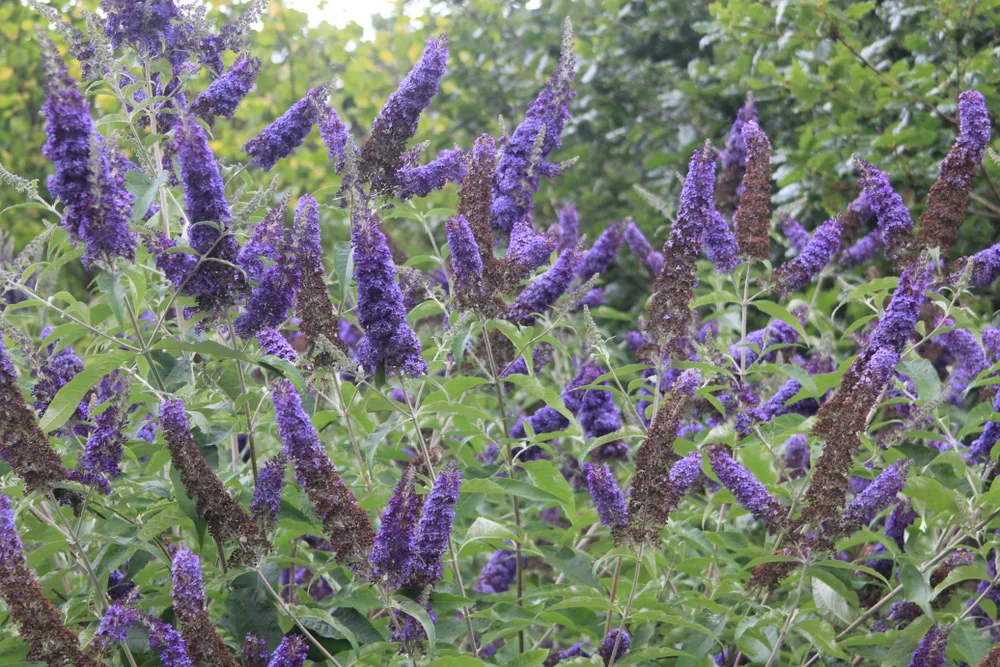
Butterfly bush was introduced to North America around 1900, originally hailing from Japan and China.
It has since escaped cultivation through copious self-seeding dispersed by wind, spreading aggressively in eastern and western states. It is classified as a noxious weed in Oregon and Washington.
Butterfly bush produces fragrant and showy arching panicles with densely clustered tiny flowers. And while it’s true that this shrub provides a source of nectar for pollinators, it is actually detrimental to butterflies.
Although adult butterflies will feed on its nectar, butterfly larvae (caterpillars) cannot use the leaves of the butterfly bush as a food source. Because butterfly bush doesn’t support the entire lifecycle of butterflies, it is quite harmful when it displaces native plants in forests and meadows that caterpillars need to survive.
Grow this instead:
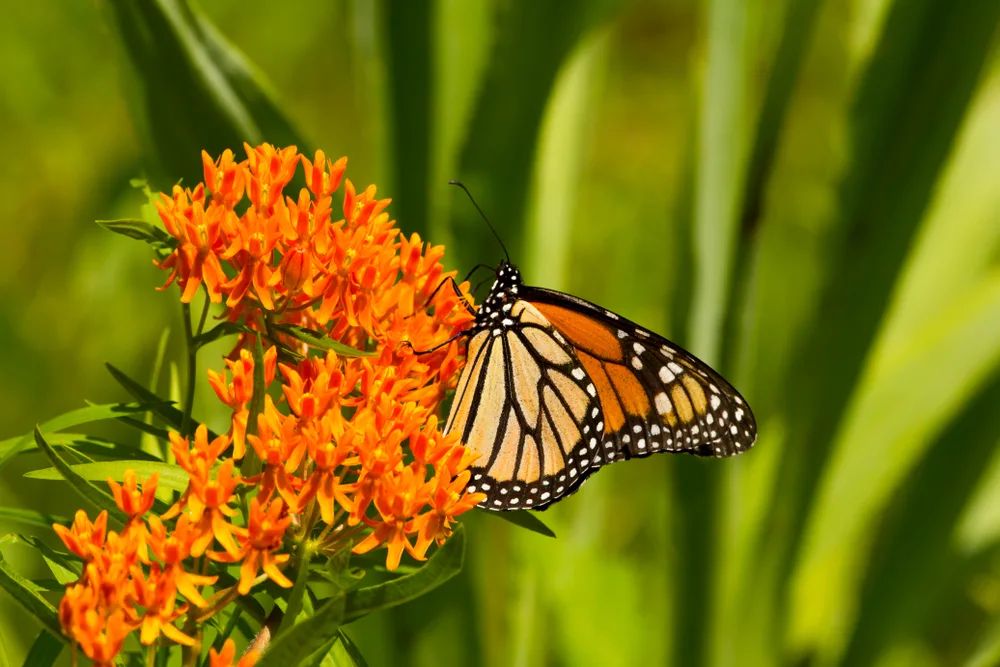
- Butterfly Weed (Asclepias tuberosa)
- Common Milkweed (Asclepias syriaca)
- Joe Pye Weed (Eutrochium purpureum)
- Sweet Pepperbush (Clethra alnifolia),
- Buttonbush (Cephalanthus occidentalis)
- New Jersey Tea (Ceanothus americanus)
2. Chinese Wisteria (Wisteria sinensis)
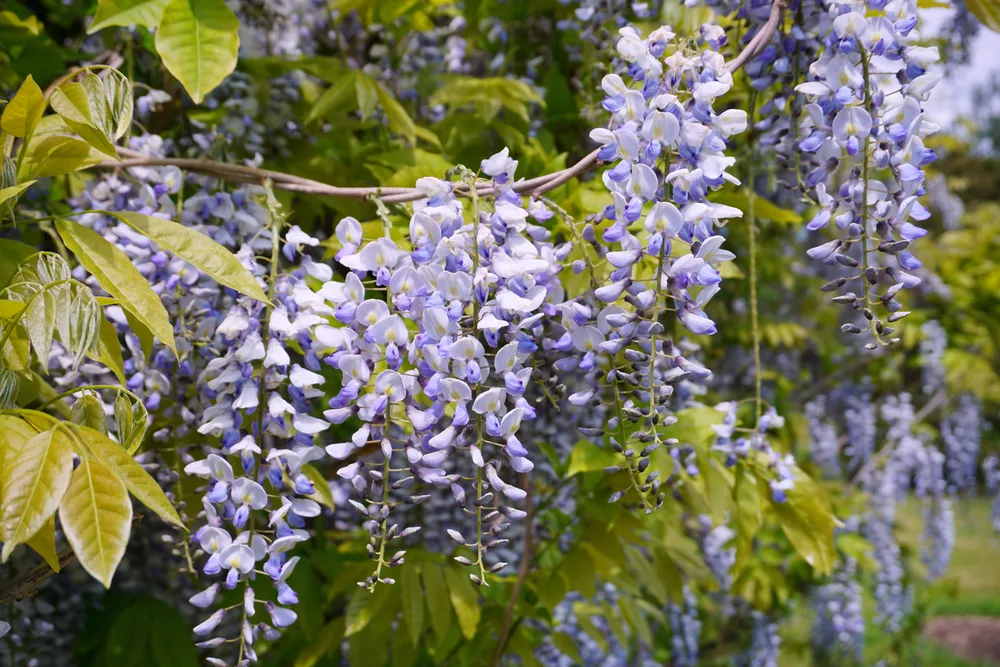
Wisteria is a gorgeous woody vine that blooms with drooping clusters of bluish purple flowers in spring.
While it looks absolutely stunning growing up walls and other structures, its vines will eventually become heavy and quite massive. The vines can make their way into cracks and crevices, damaging the façades of homes, garages, and sheds.
While gardeners should be prepared for plenty of pruning and maintenance with wisteria, the Chinese variety is especially problematic.
First introduced to the United States in the early 1800s, Chinese wisteria is a very aggressive grower that has invaded the wilderness of the eastern and southern states. Because it grows so fast and becomes so massive, it kills trees and shrubs by girdling them and blocks out sunlight from reaching the forest understory.
If you love the look of wisteria, grow varieties that are indigenous to the region. And when planting, do so away from your home. Train wisteria to grow on freestanding structures like heavy duty pergolas or arbors.
Grow this instead:
- American Wisteria (Wisteria frutescens)
- Kentucky Wisteria (Wisteria macrostachya)
3. Burning Bush (Euonymus alatus)
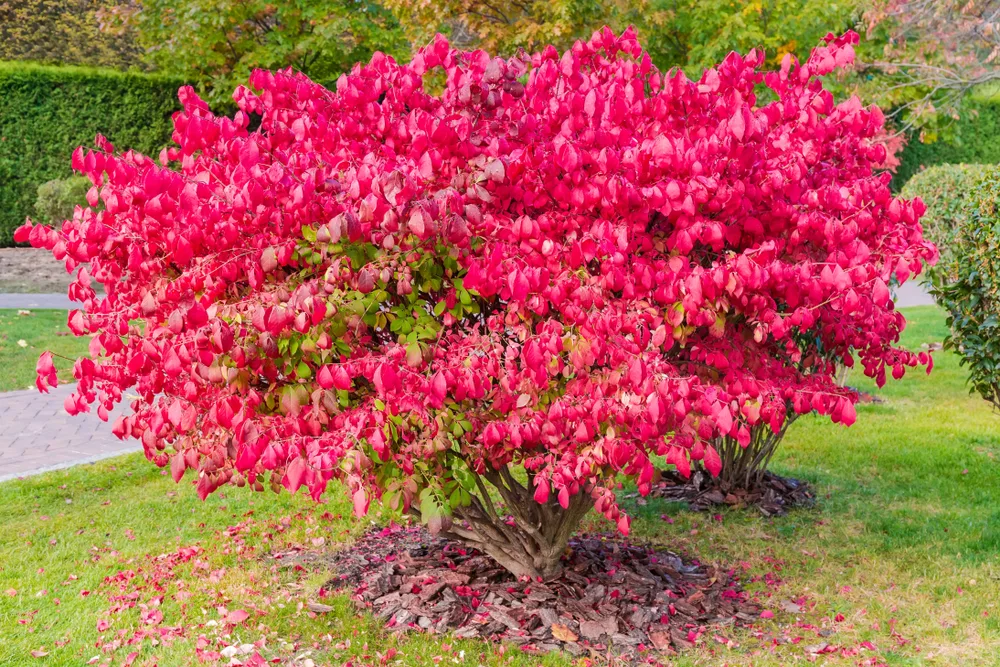
Also known as winged spindle tree and winged euonymus, burning bush is a spreading deciduous shrub with leaves that turn a vibrant scarlet hue in autumn.
A native of northeastern Asia, burning bush was first brought over in the 1860s. Since then it has spread to at least 21 states, establishing itself in forests, fields, and roadsides in dense thickets where it crowds out native plants.
Burning bush is able to spread far and wide because birds and other wildlife disperse seeds from eating the berries it produces.
Grow this instead:
- Eastern Wahoo (Euonymus atropurpureus)
- Red Chokeberry (Aronia arbutifolia)
- Fragrant Sumac (Rhus aromatica)
- Dwarf Fothergilla (Fothergilla gardenii)
4. English Ivy (Hedera helix)
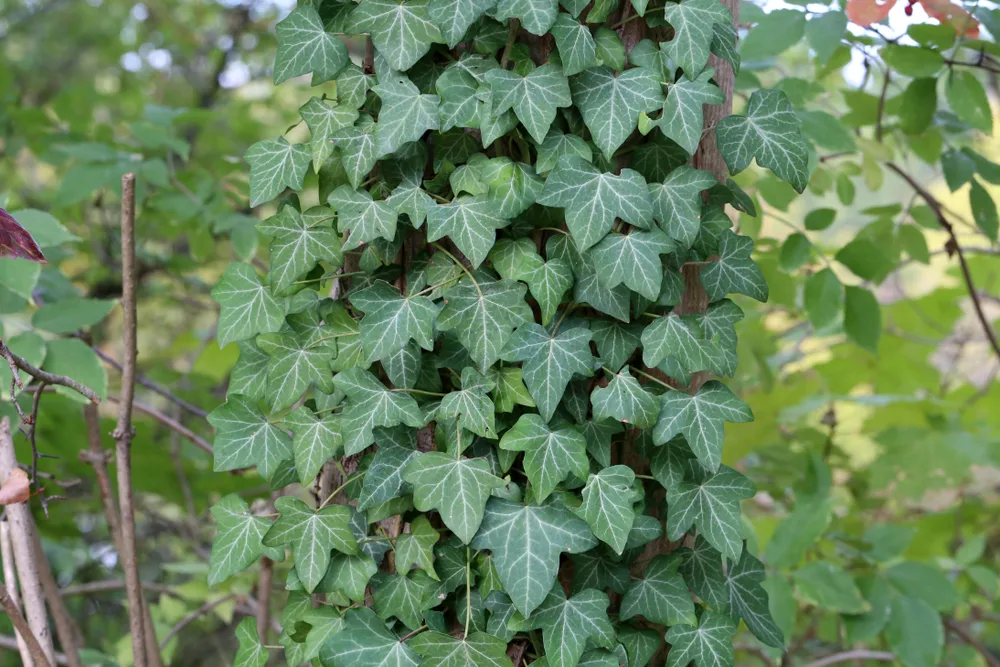
Grown as a climbing vine and ground cover, English ivy is a lovely façade green with its lobed deep green foliage. Since it is drought tolerant and adaptable to heavy shade, it is a popular vine that is still widely sold in the US.
English ivy is much better when kept indoors as a houseplant. When planted outdoors, it escapes cultivation with the help of birds that disperse its seeds.
In the wilderness, it grows quickly and aggressively along the ground, choking out native vegetation. Trees in its path become infested, blocking out sunlight from the tree’s foliage, which will slowly kill the tree.
Worse still, English ivy is a carrier of bacterial leaf scorch (Xylella fastidosa), a plant pathogen that can have a devastating impact of many types of trees.
Grow this instead:
- Virginia Creeper (Parthenocissus quinquefolia)
- Cross Vine (Bignonia capreolata)
- Supple-Jack (Berchemia scandens)
- Yellow Jasmine (Gelsemium sempervirens)
5. Japanese Barberry (Berberis thunbergii)
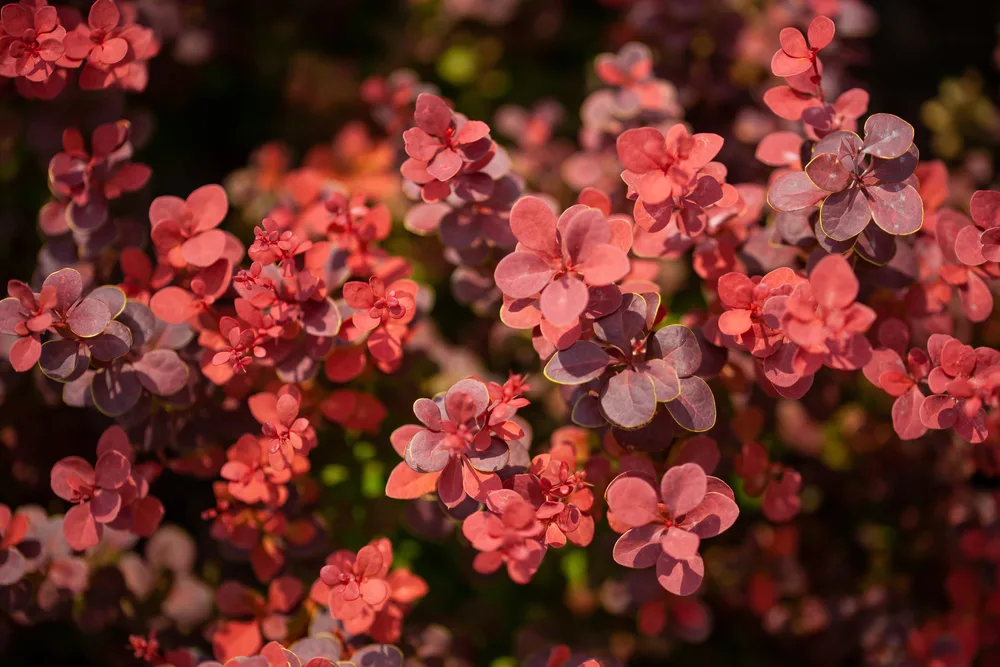
Japanese barberry is a small, thorny, deciduous shrub with paddle shaped leaves, often used as a hedge in landscaping. It is available in numerous cultivars with red, orange, purple, yellow, and variegated hues.
Introduced to the US in the 1860s, it has colonized large swaths of the Great Lakes region by adapting to a wide range of habitats including wetlands, woodlands, and open fields.
While Japanese barberry displaces native species, it also changes the chemistry of the soil it grows in by making soils more alkaline and altering soil biota.
Its dense habit creates high humidity within its foliage, providing a safe harbor for ticks. In fact, it has been theorized that the increase in Lyme disease is directly related to the spread of Japanese barberry.
Grow this instead:
- Bayberry (Myrica pensylvanica)
- Winterberry (Ilex verticillata)
- Inkberry (Ilex glabra)
- Ninebark (Physocarpus opulifolius)
6. Norway Maple (Acer platanoides)
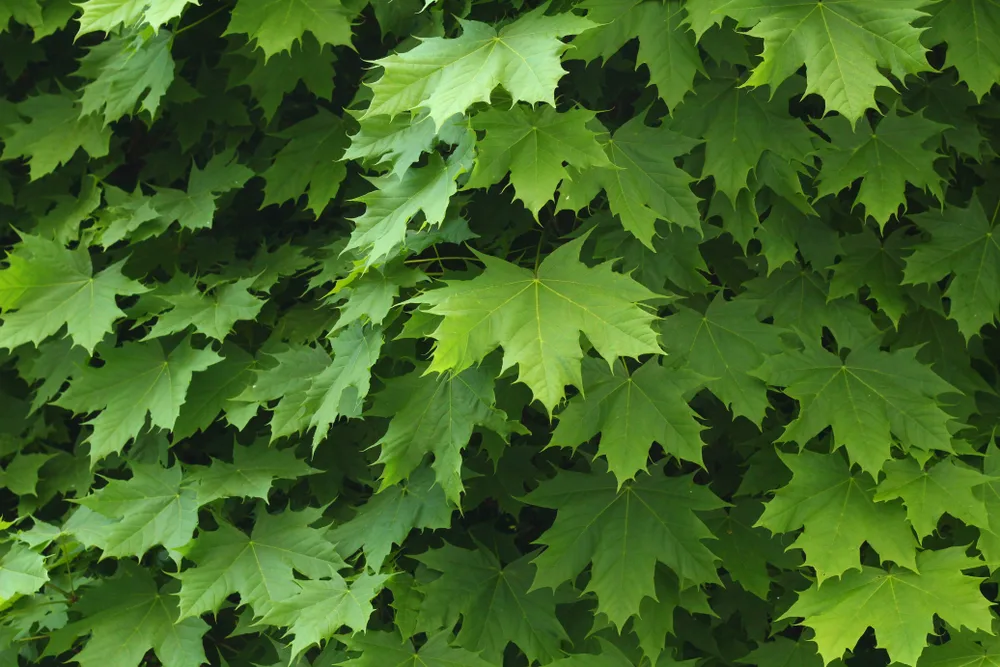
An European transplant introduced to North America in the 1750s, Norway maple has since come to dominate forests in the northern parts of the US and Canada.
Although it was initially prized for its easygoing nature, being tolerant of drought, heat, air pollution, and a wide range of soils, Norway maple has had a dramatic effect on the character and structure of our woodland areas.
Norway maple is a fast grower that freely reseeds itself. Its shallow root system and large canopy means very little can grow beneath it. Blocking sunlight and starving plants for moisture, it overwhelms the habitat and creates forest monocultures.
Especially troubling is it directly threatens the survival of native maple trees, since deer and other critters will avoid eating the leaves of the Norway maple and will consume native species instead.
Grow this instead:
- Sugar Maple (Acer saccharum)
- Red Maple (Acer rubrum)
- Red Oak (Quercus rubra)
- American Linden (Tilia americana)
- White Ash (Fraxinus americana)
7. Japanese Honeysuckle (Lonicera japonica)
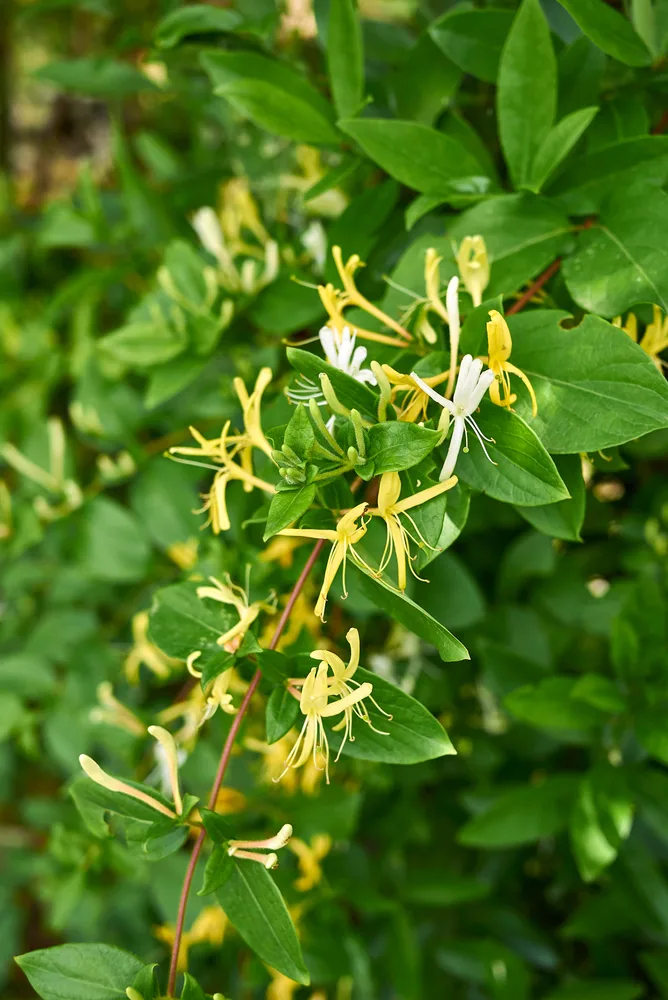
Japanese honeysuckle is a fragrant twining vine bearing white to yellow tubular flowers from June to October.
Although lovely, Japanese honeysuckle is an extremely aggressive spreader, creeping in dense mats along the ground and suffocating any trees and shrubs it climbs on. It shades out everything that happens to grow below it.
Initially planted in New York in 1806, Japanese honeysuckle now occupies vast tracts of the Eastern Seaboard.
Plant this instead:
- Trumpet Honeysuckle (Lonicera sempervirens)
- Dutchman’s Pipe (Aristolochia tomentosa)
- Purple Passionflower (Passiflora incarnata)
8. Winter Creeper (Euonymus fortunei)
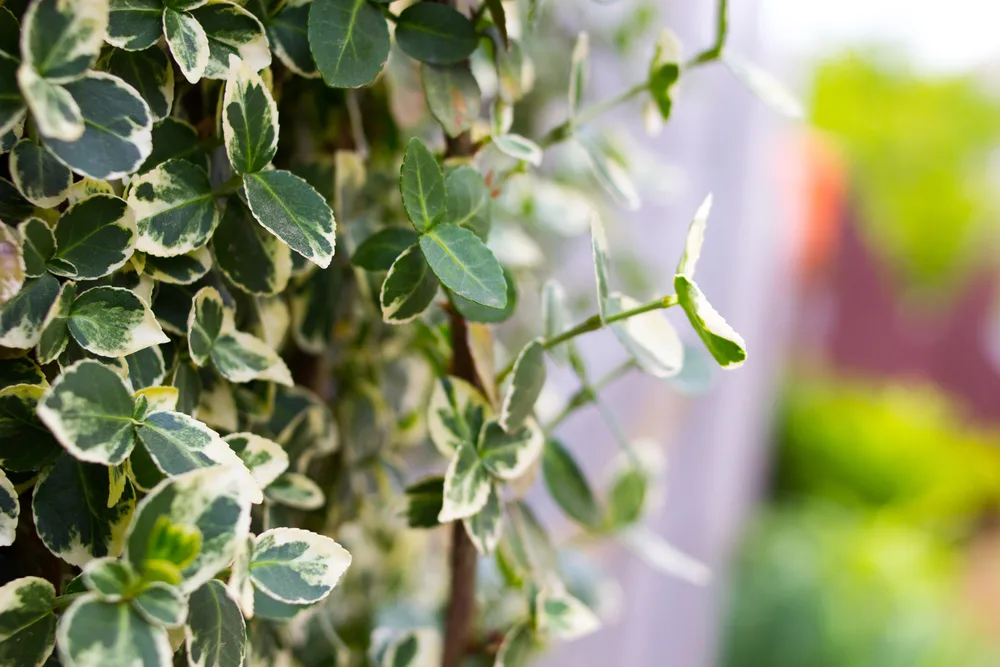
A dense, woody, broadleaf evergreen, winter creeper is a versatile plant with many habits: mounding shrub, hedge, climbing vine, or creeping ground cover.
Winter creeper readily self-seeds and can be found growing in the wilds in the eastern half of the US. It invades forest areas that have been opened up due to fires, insects, or wind.
Because it vigorously spreads across the ground, it chokes out low growing plants and seedlings. Clinging to the bark of trees, the higher it grows, the farther its seeds can be carried by the wind.
Grow this instead:
- Wild Ginger (Asarum canadense)
- Strawberry Bush (Euonymus americanus)
- Moss Phlox (Phlox subulata)
- Sweet Fern (Comptonia peregrina)
9. Autumn Olive (Elaeagnus umbellata)
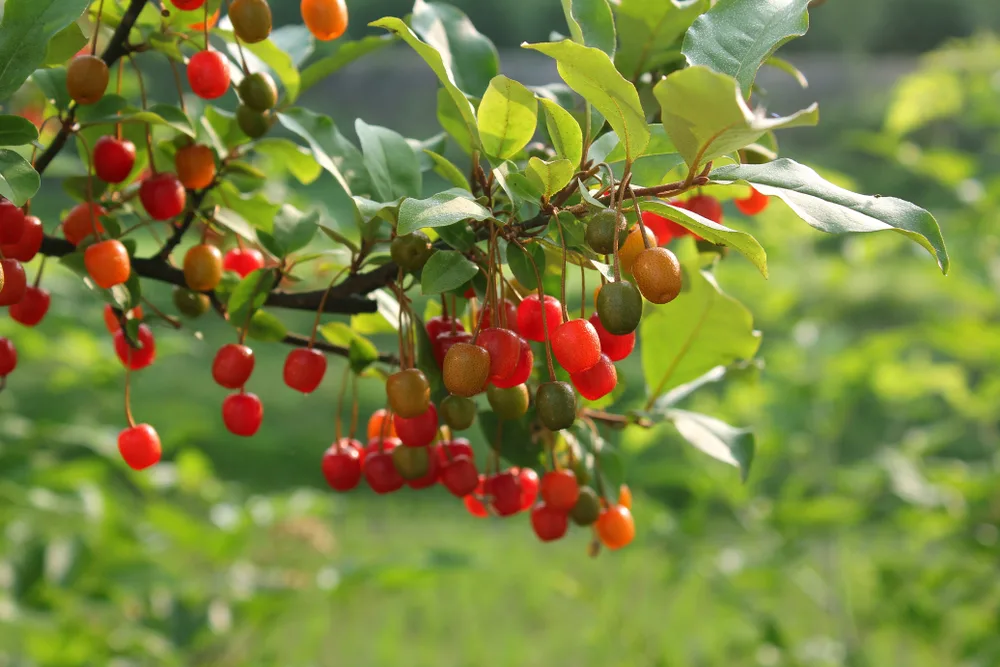
Autumn olive, or autumnberry, is an attractive sprawling shrub with thorny stems and silvery green elliptical leaves. Indigenous to Eastern Asia, it was first brought to the US in the 1830s to rewild and restore old mining sites.
At one time, it was advised to grow this shrub for its many positive attributes, including erosion control, as a windbreak, and for its edible fruit. Autumn olive is also a nitrogen fixer that thrives in barren landscapes.
Despite its good qualities, autumn olive has since invaded many areas of the eastern and central US, forming dense, impenetrable thickets that displaces native plants.
It has been able to spread so successfully because it grows quickly and reproduces via root suckers and self-seeding. A single autumn olive plant can produce 80 pounds of fruit (that contain roughly 200,000 seeds) each season.
Grow this instead:
- Eastern Baccharis (Baccharis halimifolia)
- Serviceberry (Amelanchier canadensis)
- Beautyberry (Callicarpa americana)
- Wild Plum (Prunus americana)
10. Border Privet (Ligustrum obtusifolium)
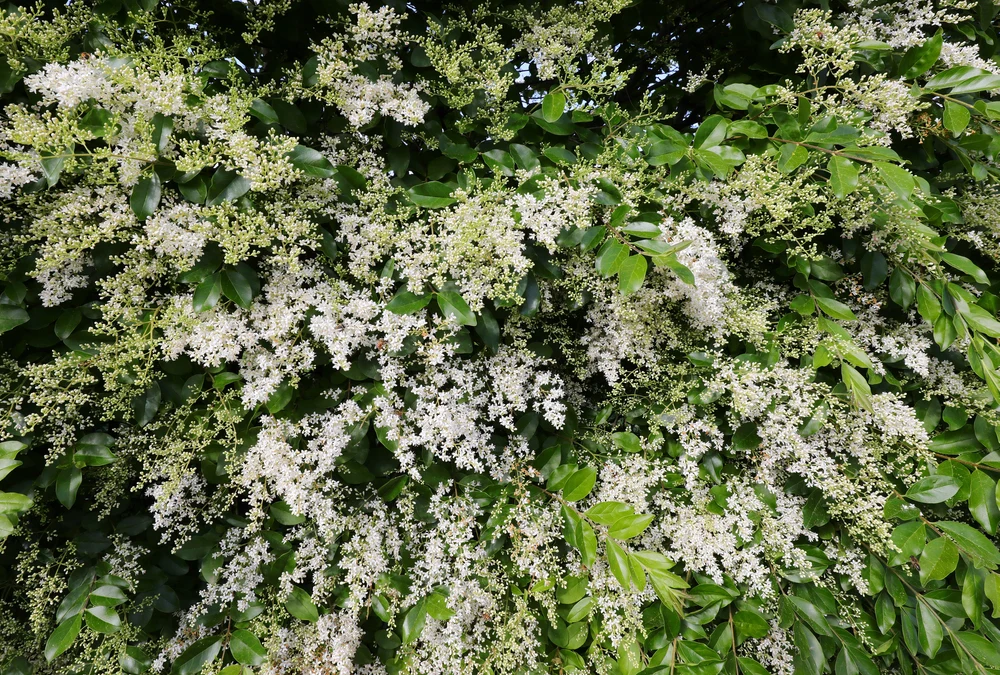
Commonly cultivated in the northern parts of the US as a hedge and privacy screen, border privet is a fast growing, deciduous shrub that hails from Asia.
Border privet generously self-seeds each season and is tolerant of wide range of soils and drought. It has escaped from home gardens in the Midwest to form dense thickets that crowd out native species.
Grow this instead:
- American Holly (Ilex opaca)
- Black chokeberry (Aronia melanocarpa)
- American Arborvitae (Thuja occidentalis)
- Canadian Yew (Taxus canadensis)
11. Maiden Silvergrass (Miscanthus sinensis)
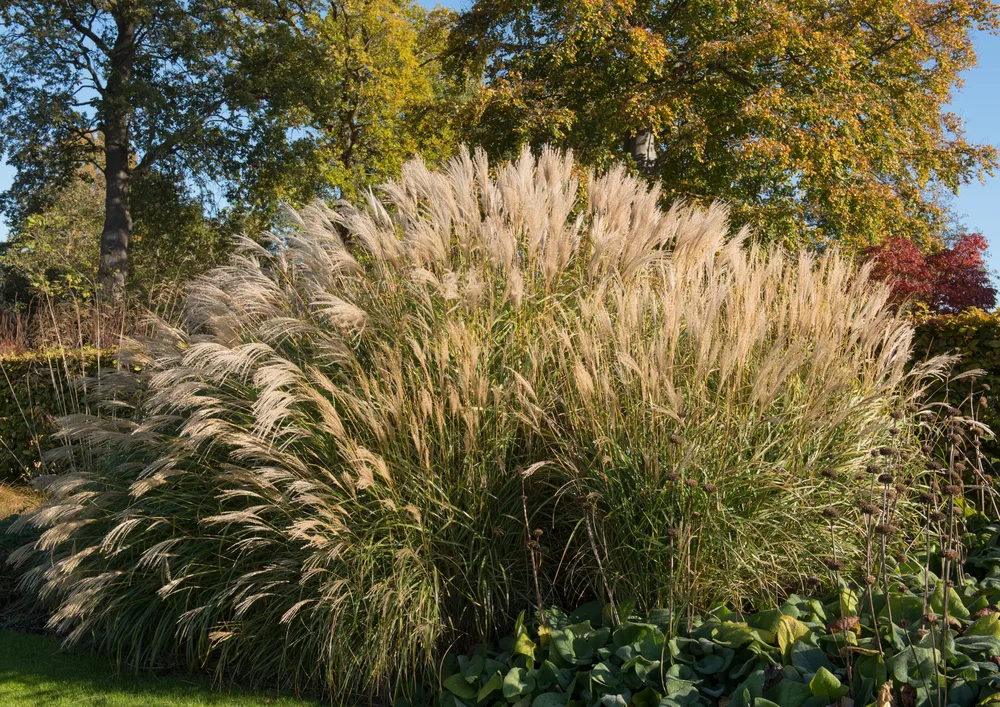
Maiden silvergrass, also known as Chinese or Japanese silvergrass, is a clump forming plant that provides color and texture in every season.
Freely self-seeding, it has spread to more than 25 states through Central and Eastern US, and can be found as far west as California.
It is also highly flammable, and increases the fire risk of any area it invades.
Grow this instead:
- Big Blue Stem (Andropogon gerardii)
- Bottlebrush Grass (Elymus hystrix)
- Switch Grass (Panicum virgatum)
- Indian Grass (Sorghastrum nutans)
12. Golden Bamboo (Phyllostachys aurea)
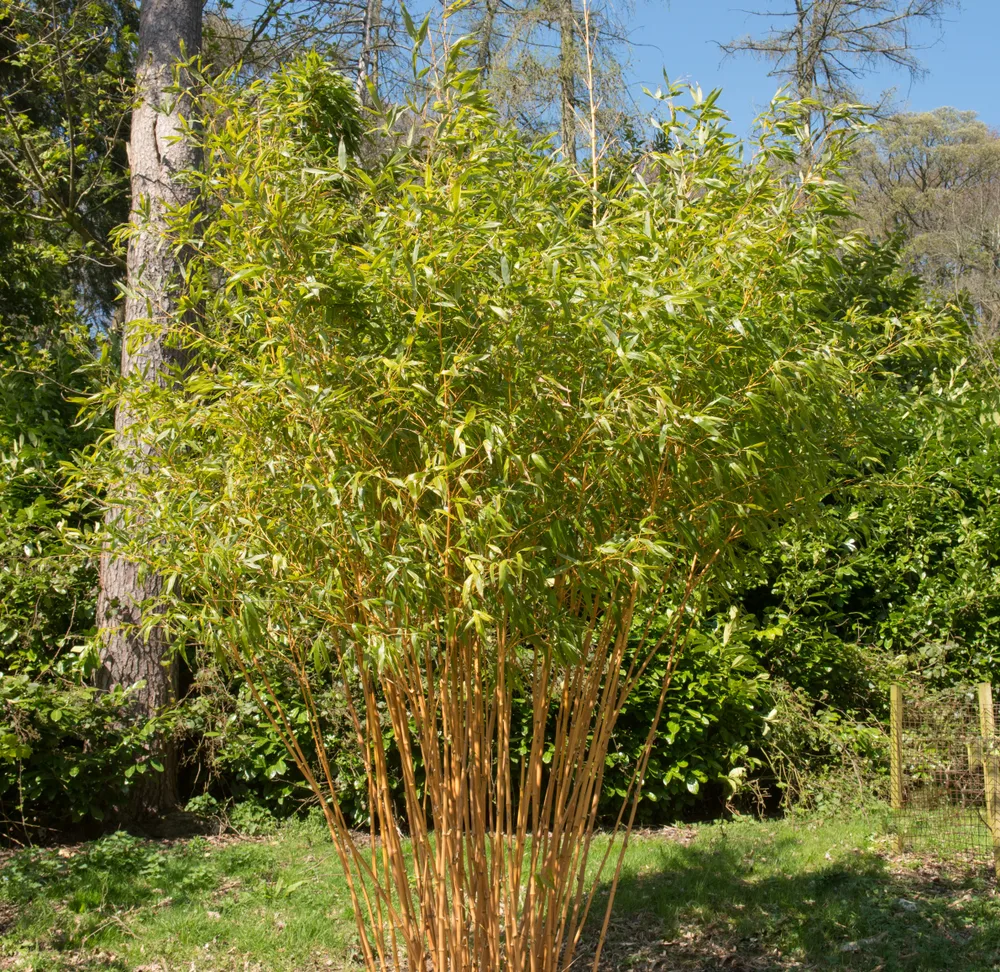
Golden bamboo is a vigorous, fast growing evergreen that turns yellow as its tall poles mature. It is frequently used as a hedge or privacy screen in home gardens.
A “running” type of bamboo, it reproduces through underground rhizomes that can emerge from the soil quite a distance from the parent plant.
Once golden bamboo is planted at a site, it is very difficult to remove. It can take years of repeatedly digging up the root system to fully eradicate it.
Brought to the US from China in the 1880s as an ornamental, golden bamboo has since invaded several southern states by forming dense monocultures that displace native plants.
Grow this instead:
- Yaupon (Ilex vomitoria)
- Bottlebrush Buckeye (Aesculus parviflora)
- Giant Cane Bamboo (Arundinaria gigantea)
- Wax Myrtle (Morella cerifera)

Get the famous Rural Sprout newsletter delivered to your inbox.
Including Sunday musings from our editor, Tracey, as well as “What’s Up Wednesday” our roundup of what’s in season and new article updates and alerts.

